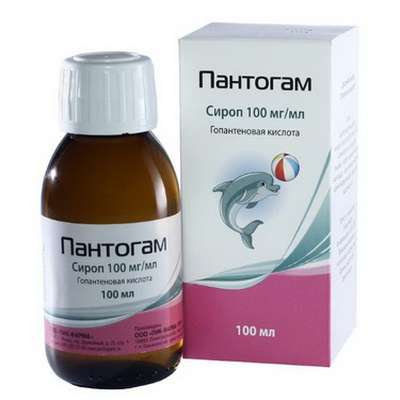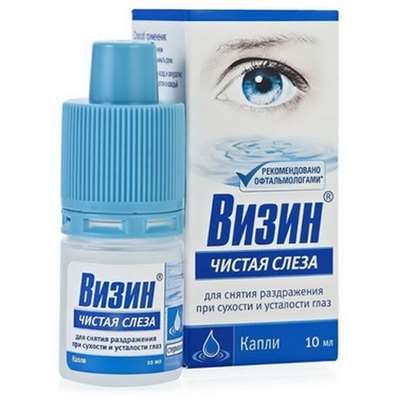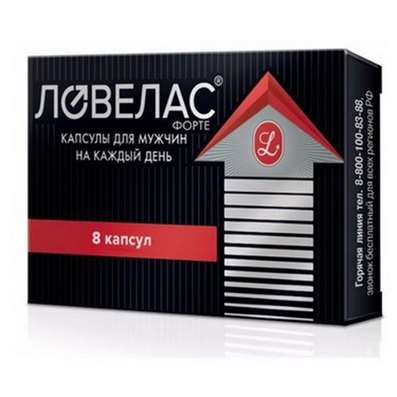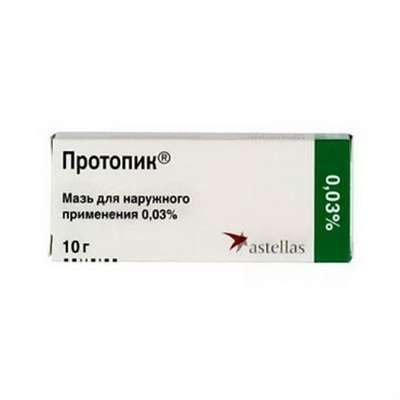Instruction for use: Revolade
I want this, give me price
Dosage form: film-coated tablets
Active substance: Eltrombopagum
ATX
B02BX05 Eltrombopag
Pharmacological group:
Stimulators of hematopoiesis
The nosological classification (ICD-10)
D63.0 Anemia in neoplasm: Anemia in chronic diseases; Anemia due to radiation damage; Radiation anemia; Anemia in patients with solid tumors; Pernicious anemia
D69.3 Idiopathic Thrombocytopenic Purpura: Werlhof's Disease; Idiopathic autoimmune thrombocytopenia; Idiopathic thrombocytopenic purpura of adults; Idiopathic thrombocytopenic purpura in adults; Immune idiopathic thrombocytopenic purpura; Immune thrombocytopenia; Bleeding in patients with thrombocytopenic purpura; Evans Syndrome; Thrombocytopenic purpura; Thrombocytopenia of immune origin; Chronic idiopathic thrombocytopenic purpura; Essential thrombocytopenia; Autoimmune thrombocytopenic purpura in pregnancy; Posttransfusion purpura
D69.9 Hemorrhagic condition, unspecified: Diathesis, hemorrhagic (familial); Hemorrhagic diathesis; Hemorrhagic complications; Hemorrhagic conditions; Hemorrhagic diathesis; Hemorrhagic syndrome; Disease of internal organs with hemorrhagic syndrome
R58 Bleeding, not elsewhere classified: Abdominal apoplexy; Hemorrhagia; Haemorrhage of the esophagus; Hemorrhage; Generalized bleeding; Diffuse bleeding; Diffuse bleeding; Prolonged bleeding; Blood loss; Blood loss during surgical interventions; Bleeding during surgery and in the postoperative period; Bleeding during labor; Bleeding and haemorrhage in hemophilia B; Bleeding from the gums; Bleeding intraoperative abdominal; Bleeding against a background of coumarin anticoagulants; Hepatic hepatitis; Bleeding in hemophilia A; Bleeding at hemophilia A; Bleeding with inhibitory forms of hemophilia A and B; Bleeding due to leukemia; Bleeding in patients with leukemia; Bleeding; Bleeding due to portal hypertension; Bleeding due to hyperfibrinolysis; Drug bleeding; Local bleeding; Local bleeding due to activation of fibrinolysis; Massive blood loss; Acute blood loss; Parenchymal hemorrhage; Hepatic bleeding; Postoperative hemorrhage; Kidney bleeding; Vascular-platelet hemostasis; Traumatic bleeding; Threatening bleeding; Chronic blood loss
Z100 * CLASS XXII Surgical practice: Abdominal surgery; adenomectomy; Amputation; Coronary angioplasty; Angioplasty of the carotid arteries; Antiseptic skin treatment for wounds; Antiseptic Hand; Appendectomy; atherectomy; Balloon coronary angioplasty; Vaginal hysterectomy; The coronary bypass; Interventions in the vagina and cervix; Interventions on the bladder; Intervention in the mouth; Restoration and reconstructive surgery; Hand hygiene of medical personnel; Gynecologic surgery; Gynecological intervention; Gynecological surgery; Hypovolemic shock during operations; Disinfection of purulent wounds; Disinfection of wounds edges; Diagnostic intervention; Diagnostic procedures; Cervical Diathermocoagulation; Long-surgery; Replacing the fistula catheters; Infection in orthopedic surgery; Artificial heart valve; cystectomy; Short-term outpatient surgery; Short-term operation; Short surgical procedures; Krikotireotomiya; Blood loss during surgery; Bleeding during surgery and in the postoperative period; Kuldotsentez; laser photocoagulation; laser coagulation; retinal laser coagulation; Laparoscopy; Laparoscopy in Gynecology; CSF fistula; Small gynecological operations; Small surgical procedures; Mastectomy and subsequent plastic; mediastinotomy; Microsurgical operations on the ear; Mukogingivalnye operation; suturing; Minor surgery; neurosurgical operation; Immobilization of the eyeball in ophthalmic surgery; testectomy; pancreatectomy; Perikardektomiya; The period of rehabilitation after surgery; The period of convalescence after surgery; Percutaneous transluminal coronary angioplasty; Pleural thoracentesis; Pneumonia postoperative and posttraumatic; Preparation for surgical procedures; Preparation for surgery; Preparation of the surgeon's hands before surgery; Preparation of the colon for surgical procedures; Postoperative aspiration pneumonia in neurosurgical and thoracic surgery; Postoperative nausea; Postoperative bleeding; postoperative granuloma; postoperative shock; The early postoperative period; myocardial revascularization; Radiectomy; gastric Resection; bowel resection; uterine Resection; liver Resection; enterectomy; Resection of part of the stomach; Reocclusion of the operated vessel; Bonding tissues during surgical procedures; Removal of sutures; Condition after eye surgery; Condition after surgery; Condition after surgery in the nasal cavity; Condition after gastrectomy; Status after resection of the small intestine; Condition after tonsillectomy; Condition after removal of the duodenum; Condition after phlebectomy; Vascular surgery; Splenectomy; Sterilization of surgical instruments; Sterilization of surgical instruments; sternotomy; Dental surgery; Dental intervention in periodontal tissues; strumectomy; Tonsillectomy; Thoracic surgery; Thoracic surgery; total gastrectomy; Transdermal intravascular coronary angioplasty; Transurethral resection; Turbinektomiya; Removal of a tooth; cataract surgery; Removal of cysts; tonsillectomy; Removal of fibroids; Removing the mobile primary teeth; Removing polyps; Removing broken tooth; Removal of the uterus body; Removal of sutures; Fistula likvoroprovodyaschih ways; Frontoetmoidogaymorotomiya; Surgical infection; Surgical treatment of chronic limb ulcers; Surgery; The surgery in the anal area; The surgery on the colon; Surgical practice; The surgical procedure; Surgical interventions; Surgery on the gastrointestinal tract; Surgical procedures on the urinary tract; Surgical procedures on the urinary system; Surgical intervention of the genitourinary system; Surgical procedures on the heart; Surgical manipulation; surgery; Surgery on the veins; Surgical intervention; Vascular surgery; Surgical treatment of thrombosis; Surgery; cholecystectomy; Partial gastric resection; hysterectomy; Percutaneous transluminal coronary angioplasty; Percutaneous transluminal angioplasty; Coronary artery bypass; tooth Extirpation; Extirpation of milk teeth; pulpectomy; pulsative cardiopulmonary bypass; tooth Extraction; teeth Extraction; cataract extraction; Electrocoagulation; endourological intervention; episiotomy; Etmoidotomiya; Complications after tooth extraction
Composition and release form
Tablets, coated with a film membrane 1 tab.
active substance: Eltrombopag olamine minced 31,9 mg (in terms of eltrombopag 25 mg); 63.8 mg (in terms of eltrombopag 50 mg)
Auxiliary substances: mannitol; MCC; Povidone K30; Sodium carboxymethyl starch (type A); Magnesium stearate; Opadraj® white YS-1-7706-G (tablets with a dosage of 25 mg); Opadry® brown 03B26716 (tablets with a dosage of 50 mg)
In contour acheikova packing 7 pcs .; In a pack of cardboard 2 or 4 packs.
Description of dosage form
The tablets covered with a film cover, a dosage of 25 mg: round, biconcave, white. On one side of the tablet are engraved "GS NX3" and "25".
The tablets covered with a film cover, a dosage of 50 mg: round, biconcave, brown color. On one side of the tablet are engraved "GS UFU" and "50".
Pharmachologic effect
Mode of action - Hemostatic, hematopoietic.
Pharmacodynamics
Thrombopoietin (TPO) is the main cytokine that takes part in the regulation of megakaryopoiesis and the production of platelets; It is an endogenous ligand for the receptor for thrombopoietin (TPO-R). Eltrombopag interacts with the transmembrane domain of the human TPO-R receptor and initiates a signal transfer cascade reminiscent of that for endogenous TPO, which is accompanied by the induction of the proliferation and differentiation of megakaryocytes from bone marrow progenitor cells.
Eltrombopag differs from TPO in terms of effects on platelet aggregation. Unlike SRW, the effect of eltrombopag on platelets of a healthy person does not enhance aggregation under the action of ADP and does not stimulate the expression of P-selectin. Eltrombopag does not prevent the aggregation of platelets under the influence of ADP or collagen.
Pharmacokinetics
The parameters of the pharmacokinetics of eltrombopag after its administration to patients with idiopathic thrombocytopenic purpura (ITP) are presented in the table below.
Average geometric (confidence interval (CI) 95%) values of plasma parameters of pharmacokinetics of eltrombopag in equilibrium in adult patients with idiopathic thrombocytopenic purpura
| Treatment regimen eltrombopagom | Cmax, mkg/ml | AUCo-t, mkg × h / ml |
| 50 mg 1 time a day (n=34) | 8,01 (6,73; 9,53) | 108 (88; 134) |
| 75 mg 1 time a day (n=26) | 12,7 (11; 14,5) | 168 (143; 198) |
Absorption and bioavailability. Eltrombopag is absorbed with reaching Cmax 2-6 hours after ingestion. The combined use of eltrombopag with antacids and other products containing polyvalent cations (for example, dairy products and mineral supplements) significantly reduces the exposure of the eltrombopag.
Absolute bioavailability of eltrombopag when taken orally has not been established. Based on renal excretion of the drug and analysis of metabolites excreted with feces, it was shown that the absorption of drug-related products after administration of a single dose of 75 mg was at least 52%.
Distribution. Eltrombopag actively binds to human plasma proteins (> 99.9%). Eltrombopag is a substrate for breast cancer resistance protein (BCRP), but not for P-glycoprotein or polypeptide organic anion transporters (OATP1B1).
Metabolism. Eltrombopag is mainly metabolized by cleavage, oxidation and conjugation with glucuronic acid, glutathione or cysteine. According to research in humans, with a drug labeled with a radioactive isotope, it was shown that the fraction of eltrombopagus accounts for about 64% of the radioactive isotope of carbon in the plasma. Minor metabolites, each accounting for less than 10% of the plasma radioactivity, are formed by glucuronidation and oxidation.
Based on the study of radio-labeled eltrombopag, it was found that approximately 20% of the dose of the drug is metabolized by oxidation.
In vitro studies have shown that CYP1A2 and CYP2C8 are isoenzymes responsible for oxidative metabolism, whereas UGT1A1 and UGT1A3 are isoenzymes responsible for glucuronidation. In the process of cleavage, bacteria from the lower gastrointestinal tract can participate.
Excretion. The absorbed elethrombopag undergoes active metabolism. The primary way of excretion of eltrombopagus is the liberation with calves (59%); With a 31% dose found in the urine in the form of metabolites. The starting substance in the urine is absent. In unchanged form with feces, about 20% of the injected drug is excreted. T1 / 2 eltrombopaga from the plasma - about 21-32 hours.
Special patient groups
Patients with impaired renal function. The pharmacokinetics of elthrombopag has been studied after the appointment of eltrombopag to adult patients with impaired renal function. After the administration of a single dose of eltrombopag, 50 mg for patients with mild impairment of renal function AUCo-∞ elthrombopag decreased by 32% (CI 90%: 63% reduction and 26% increase); Patients with moderate renal impairment - by 36% (CI 90%: 66% decrease and 19% increase); Patients with severe renal dysfunction - by 60% (CI 90%: 18% decrease, 80% decrease) compared with healthy volunteers. In patients with impaired renal function, there was a tendency to reduce the exposure of eltrombopag in plasma, but when comparing such patients and healthy individuals, a significant variability in the exposure indices was revealed.
Patients with impaired liver function. After oral administration of a single dose of eltrombopag, 50 mg for patients with mild impairment of liver function AUCo-∞ eltrombopag increased by 41% (CI 90%: 13% decrease, 128% increase); Patients with moderate impairment of liver function - by 93% (CI 90%: 19 and 213%); Patients with severe liver damage - by 80% (CI 90%: 11 and 192%) compared with healthy volunteers. When comparing such patients and healthy individuals, a significant variability in the exposure indices was revealed.
Race. The effect of the East Asian race on the pharmacokinetics of elthrombopag was assessed by a population pharmacokinetics assay in 111 healthy adults (31 from East Asia) and 88 patients with ITP (18 from East Asia). Based on the results of pharmacokinetic analysis in patients with ITP of East Asian origin (ie, Japanese, Chinese, Taiwanese and Koreans), the AUCo-t elthrombopag values were approximately 87% higher than those of patients of non-East Asian origin (mainly Caucasoids) ; With the correction of doses by body weight was not carried out.
Floor. The effect of sex on the pharmacokinetics of elthrombopag was assessed by a population pharmacokinetics assay in 111 healthy adult subjects (14 women) and 88 patients with ITP (57 women). Based on the indices of population pharmacokinetic analysis, the plasma index of AUCo-t elthrombopag in patients with ITP was approximately 50% higher than in male patients; With no correction for body weight.
IndicationofthedrugRevolade
Thrombocytopenia in patients with chronic ITP who had an insufficient response to corticosteroids, immunoglobulins, and / or splenectomy. The drug Revolide is assigned to these patients in order to reduce the risk of bleeding.
Contraindications
Unknown.
With caution: impaired renal function, liver; Period of pregnancy; Lactation period; Risk factors for thromboembolism (eg deficiency of factor V Leiden, antithrombin III, antiphospholipid syndrome).
Application of pregnancy and breastfeeding
The effects of elthrombopag in pregnant women are unknown.
Eltrombopag should be used during pregnancy only if the expected benefit to the mother exceeds all potential risks to the fetus.
It is not known whether eltrombopag is excreted in breast milk.
Treatment with elethrombopag is not recommended for women during lactation, except when the expected benefit to the mother exceeds all potential risks for the child.
Side effects
Clinical researches
The safety and efficacy of eltrombopag has been demonstrated in two double-blind, randomized, placebo-controlled trials in adult patients with chronic ITP previously treated.
Most of the unwanted reactions associated with eltrombopag have mild or moderate severity, early onset, and rarely caused a change in treatment.
Undesirable reactions are listed in accordance with the anatomical and physiological classification and frequency of occurrence, which was determined as follows: very often - ≥1 / 10; Often - ≥1 / 100 and <1/10; Sometimes - ≥1 / 1000 and <1/100; Rarely - ≥1 / 10000 and <1/1000.
Infections and infestations: often - pharyngitis, urinary tract infections.
From the gastrointestinal tract: very often - nausea, diarrhea; Often - dry mouth, vomiting.
From the side of the liver and bile ducts: often - increasing the level of AST and ALT.
From the skin and subcutaneous fat: often - alopecia, rash.
From the musculoskeletal system and connective tissue: often - back pain, chest pain of musculoskeletal, musculoskeletal pain, myalgia.
Interaction
Rosuvastatin: when combined with eltrombopagom should consider reducing the dose of rosuvastatin, as well as conduct careful monitoring of the patient's condition. In clinical studies of eltrombopag with concomitant therapy with rosuvastatin, a dose reduction of 50% was recommended. Co-administration of eltrombopag and other substrates of OATP1B1 and BCRP requires caution.
Polyvalent cations (formation of chelate complexes): in order to avoid a significant decrease in absorption of eltrombopag, the drug should be taken at least 4 hours before or after taking antacids, dairy products and other substances containing polyvalent cations (for example, mineral supplements containing aluminum, calcium, Iron, magnesium, selenium and zinc).
Food: taking a single dose of eltrombopag 50 mg with a standard high-calorie breakfast containing high amounts of fat and dairy products reduces the AUCo-∞ by 59% (CI 90%: 54 and 64%) and Cmax by 65% (CI 90%: 59 And 70%). Foods with a low calcium content (<50 mg calcium), including fruit, lean ham, beef, fruit juice, soy milk and croup without calcium, iron and magnesium additions, do not significantly affect the plasma exposure of eltrombopagus, regardless of caloric content and fat content .
Dosing and Administration
Inside, at least 4 hours before or 4 hours after taking antacids, dairy products or mineral supplements containing polyvalent cations (for example, aluminum, calcium, iron, magnesium, selenium and zinc).
The drug Revolide can be taken with food containing a small amount of calcium (<50 mg) or, preferably, not containing calcium.
The dosage regimen of the drug Revolide is assigned individually based on the number of platelets.
To maintain a clinically necessary amount of platelets use the lowest effective dose of the drug.
In most patients, the increase in the number of platelets occurs after 1-2 weeks of treatment.
Adults. The recommended initial dose is 50 mg once a day. If after 2-3 weeks of initial therapy the amount of platelets is below the level required from a clinical point of view (ie 50000 / μl), the dose can be increased to a maximum of 75 mg once a day. The standard dose adjustment in the direction of reduction or increase should be 25 mg per day. However, some patients may require a combination of different dosages on different days.
After any correction of the dose of Revolide, the amount of platelets should be monitored at least weekly for 2-3 weeks. Waiting for a response from the patient's platelet level should be at least 2 weeks after dose adjustment.
At a platelet level of 200,000-400,000 / μl, it is recommended to lower the dose of Revolide.
Treatment with Revolide should be stopped if the number of platelets exceeds 400,000 / μL. With a decrease in the number of platelets less than 150,000 / μL, treatment should be resumed in a reduced daily dose.
Special patient groups
Children. The safety and effectiveness of the use of eltrombopag in children have not been established.
Elderly patients. There are limited data on the use of elthrombopag in patients aged 65 years and older. Clinical studies of eltrombopag showed no clinically significant differences in drug safety in patients aged 65 years and older compared with younger patients. However, increased sensitivity to the drug in some elderly patients is not excluded.
Natives of East Asia. Patients - residents and descendants of East Asia and their descendants (for example, Chinese, Japanese, Taiwanese and Koreans) - it is recommended to prescribe the drug in a reduced initial dose of 25 mg once a day. It is necessary to count the number of platelets of the patient. Standard criteria and recommendations for further dose adjustment are allowed.
Overdose
Symptoms: One case of overdose was recorded in clinical trials when the patient ingested 500 mg of eltrombopag, with the following symptoms: unresponsive rash, transient bradycardia, fatigue and increased transaminase levels. These changes were reversible.
In the case of an overdose, a significant increase in the number of platelets is possible, which can lead to thrombotic / thromboembolic complications.
Treatment: In case of an overdose, consider taking oral medications containing metal cations, such as calcium, aluminum or magnesium, to reduce the absorption of eltrombopag. Thrombocyte count should be carefully monitored. Treatment with eltrombopagom is resumed in accordance with the recommendations for the dosing regimen.
Since renal excretion is not the main way of excretion of eltrombopag, which actively binds to blood plasma proteins, it is more likely that hemodialysis is not an effective method of significantly accelerating the excretion of eltrombopag from the body.
Special instructions
The efficacy and safety of the use of eltrombopag for the treatment of other diseases and conditions accompanied by thrombocytopenia, including thrombocytopenia after chemotherapy and myelodysplastic syndromes, have not been established.
Monitoring of liver function
The use of eltrombopag may cause deviations in laboratory parameters of liver function. In clinical studies, there has been an increase in serum ALT, ACT and indirect bilirubin levels. These phenomena were for the most part light (1-2 degree) and reversible character without clinically significant symptoms, which would indicate a violation of liver function. According to two placebo-controlled studies, adverse events in the form of elevated ALT levels were noted in 5.7 and 4% of patients treated with eltrombopag and placebo, respectively. Serum ALT, ACT and bilirubin levels should be assessed before treatment with eltrombopag, then monitored every 2 weeks during dose titration, and monthly after a stable dose is prescribed. Repeated examination after detection of abnormalities in liver function tests is performed within 3-5 days. If the deviation is confirmed, the monitoring is continued until the moment of resolution of this phenomenon, its stabilization or return of the indicators to the initial level. Treatment with eltrombopagom stop in the case of increased ALT (≥3-fold increase in the value of ULN and the presence of the following signs
- progression of the deviation, or
- preservation of the deviation ≥4 weeks, or
- its combination with an increase in the level of direct bilirubin, or
- its combination with clinical symptoms of liver damage or signs of decompensation of liver function.
Patients with impaired hepatic function should be administered with caution. In patients with moderate or severe hepatic insufficiency, the initial dose should be 25 mg once a day.
Thrombotic / thromboembolic complications
The number of platelets above the norm represents a theoretical risk of thrombotic / thromboembolic complications. In clinical studies of eltrombopag, thromboembolic complications were observed at low and normal amounts of platelets. In studies of idiopathic thrombocytopenic purpura, 21 out of 446 patients (3.8%) had 21 episodes of thromboembolism. Thromboembolism included: embolism, incl. Pulmonary, deep vein thrombosis, transient ischemic attacks, myocardial infarction, ischemic stroke and suspected prolonged reversible ischemic neurological deficit.
Thrombotic / thromboembolic complications can result from a very significant increase in platelet count. Patients with known risk factors for thrombotic / thromboembolic complications (such as Leyden V Factor V mutation, ATIII deficiency, antiphospholipid syndrome, etc.) should be given special attention in the appointment of eltrombopag.
Thrombocyte count should be carefully monitored and the question of dose reduction or elimination of eltrombopag should be considered if the platelet count exceeds the target values.
In a controlled trial involving patients with thrombocytopenia and chronic liver disease (n = 288) who underwent elective invasive interventions, the risk of thrombotic complications was increased in patients treated with eltrombopag at a dose of 75 mg once daily for 14 days. Six thrombotic complications were noted in the group of patients receiving eltrombopag, and 1 in the placebo group. All thrombotic complications noted in patients from the eltrombopag group were in the portal vein system.
Bleeding after discontinuation of treatment with elthrombopag
After cessation of treatment with eltrombopag, in most patients the platelet count returns to baseline within 2 weeks, which increases the risk of bleeding, and in some cases may lead to bleeding. The number of platelets should be monitored weekly for 4 weeks after the erthrombopag withdrawal.
The formation of reticulin in the bone marrow and the risk of bone marrow fibrosis
Thrombopoietin receptor agonists, including elthrombopag, may increase the risk of the formation or proliferation of reticulin fibers in the bone marrow. Before starting treatment with eltrombopagom it is necessary to evaluate the smears of peripheral blood to determine the initial level of morphological changes in cells. After achieving a stable dose of elthrombopag, a general clinical blood count is performed monthly, with a count of the leukocyte count. When detecting immature or dysplastic cells, it is necessary to conduct a study of the peripheral blood smear for the appearance of new or enhancing existing morphological changes (eg, the appearance of drop-shaped and nuclear erythrocytes, immature leukocytes) or the detection of cytopenia. If a patient develops new or strengthens existing morphological abnormalities or cytopenia, he should stop the treatment with eltrombopag and consider the bone marrow biopsy, including the coloration of the smear for the purpose of revealing fibrosis.
Malignant neoplasms and progression of malignant neoplasms
There is a theoretical possibility that thrombopoietin receptor agonists can stimulate the progression of existing hematologic neoplasms, for example myelodysplastic syndrome. Clinical studies showed no difference in the incidence of malignant neoplasms or malignant blood formation between patients receiving placebo and patients receiving elthrombopag.
Cataract
In toxicological studies of elthrombopag, cataracts were detected in rodents. The clinical significance of this symptom is unknown. It is recommended routine monitoring of patients for the development of cataracts.
Influence on ability to drive and other moving mechanisms
Studies on the effect of eltrombopag on the ability to drive a car or work with mechanisms have not been carried out. Based on the pharmacological properties of elthrombopag, no adverse effect on such activities is expected. However, when assessing a patient's ability to perform actions that require quick thinking, motor and cognitive skills, the clinical condition of the patient and the profile of unwanted effects of elthrombopag should be considered.
A comment
Organization that accepts claims in the Russian Federation
ZAO "GlaxoSmithKline Trading": 121614, Moscow
Conditions of supply of pharmacies
On prescription.
Storage conditions of the drug Revolade
at a temperature of no higher than 30 ° C.
Keep out of the reach of children.
Shelf life of the drug Revolade
3 years.
Do not use after the expiry date printed on the package.

 Cart
Cart





